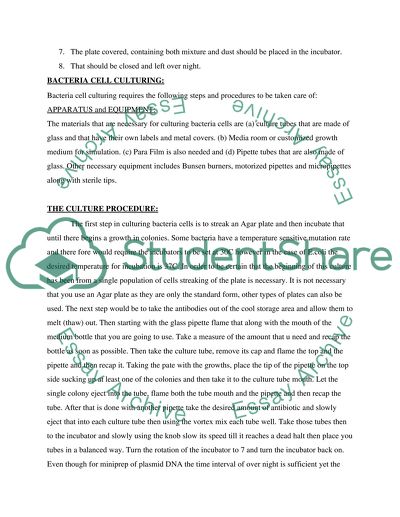Bacterial Culture Techniques Essay Example | Topics and Well Written Essays - 500 words. Retrieved from https://studentshare.org/miscellaneous/1542277-bacterial-culture-techniques
Bacterial Culture Techniques Essay Example | Topics and Well Written Essays - 500 Words. https://studentshare.org/miscellaneous/1542277-bacterial-culture-techniques.


